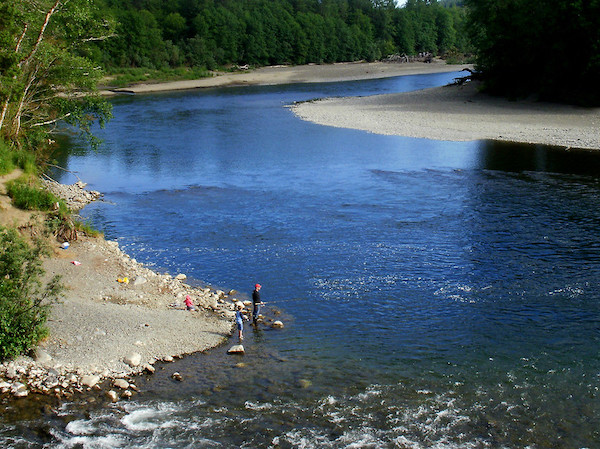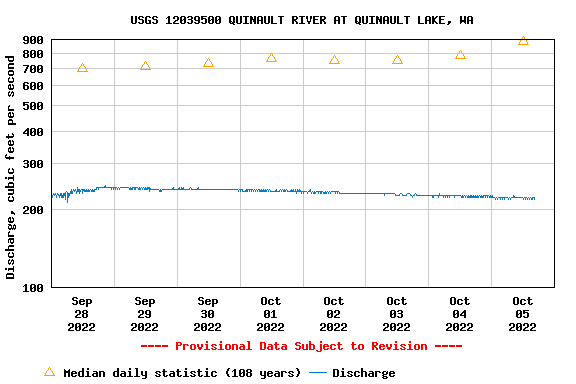
Fishing To Shut Down On Many Olympic National Park Rivers
With waters running at all-time lows and no real fall rains in sight, a host of salmon and steelhead rivers and streams inside Olympic National Park will close to recreational fishing starting tomorrow, October 6.

A press release out today from managers of the 1,442-square-mile federal park on Washington’s Olympic Peninsula and North Coast says the emergency closure is meant to “protect several fish populations during the ongoing severe low-flow conditions.”
This time of year sees the return of fall Chinook and coho, while these waters are also host to other stocks such as summer steelhead, summer coho, sockeye, resident rainbows, bull trout and more.
Rivers like the Hoh and upper Quinault are flowing at their lowest levels ever for this date, with the former trickling along at 231 cubic feet per second at this hour and the latter at 221 cfs. Median October 5 flows for both are 818 and 890 cfs, respectively.

Along with a lack of the typical early fall rains, the past three months have been abnormally warm and dry.
“Finishing up the final hours on the warmest and driest July thru September for many Western Washington locations. In Seattle, rain total of 0.48″, only 15% of normal, broke the previous dry record of 0.61” (2017). The avg. temp currently at 68.0°, old record 67.7° (2014). #wawx,” tweeted the National Weather Service’s Seattle Bureau late last month.

Affected Olympic National Park waters include:
Ozette, Bogachiel, South Fork Calawah, Sol Duc, North Fork Sol Duc, Dickey, Quillayute, Hoh, South Fork Hoh, Queets, Salmon, and Quinault Rivers (including East Fork, North Fork, Main Stem);
Cedar, Goodman, Kalaloch, and Mosquito Creeks
“This year’s severe drought conditions have reduced river flows to at or near historic low levels,” ONP managers say. “This emergency closure is designed to protect fish in areas where severe conditions have reduced river flows to historical low levels. Low water conditions may impede upstream spawning migrations and also increase the vulnerability of salmonids to angling as fish concentrate in smaller and smaller pools. The broad application of this closure is necessary to address angling pressure during these extreme low-flow conditions to better protect Pacific salmon, steelhead trout, and federally threatened bull trout in the park’s rivers and creeks. This closure is consistent with our cooperative managers.”


